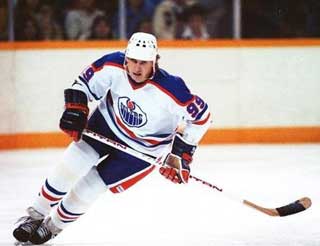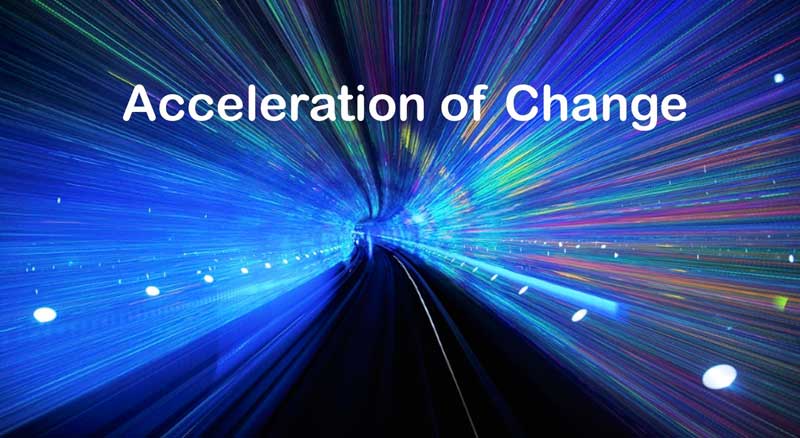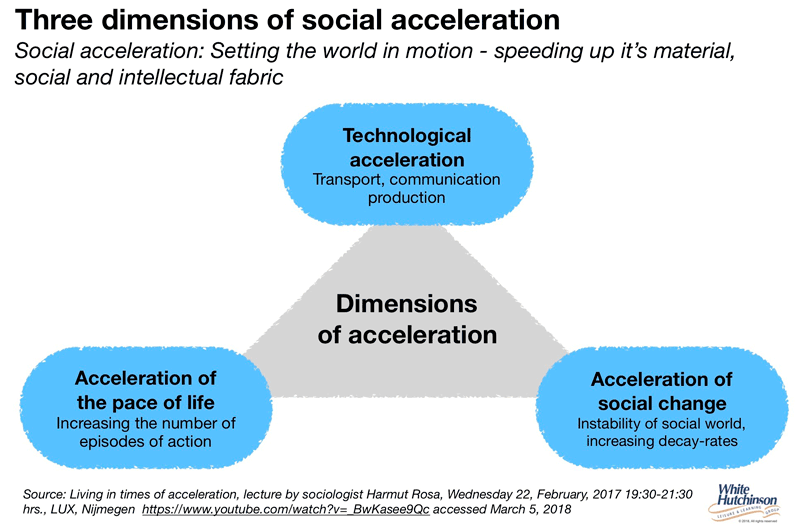
Vol. XVIII, No. 3, April 2018
- Editor's corner
- Follow tomorrow's food culture trends or be in peril
- Which generation spends the most on F&B away from home?
- Doc Brundy's nearing completion
- Skate to where the puck is going to be
- Who uses social media?
- Pinball renaissance
- Table 47 & Ocean5 now open
- Move over cows, here come the plants
- Update on the Tchotchke Index
Skate to where the puck is going to be

Hockey legend Wayne Gretzky famously said that his father told him to “skate to where the puck is going to be, not to where it has been.” It's a quote repeated often in the business world and advice that all types of community leisure venues (CLVs), including FECs, should heed. This is especially true for new CLVs. Here's why. We'll use the story about Sally Startup to explain.
One day Sally's entrepreneurial spirit awakens and she decides she's going to develop a CLV. So, she does her due diligence searching the Internet and traveling around the country checking out different CLVs. Based on what she sees and her research, she develops the concept for her CLV - we'll call it Sallyville. She searches for a location in her city and finds a good vacant store. A market feasibility study by an industry consultant confirms it's a good location and the market can support her project. After negotiation with the landlord, she secures a letter of intent (LOI) and retains an industry expert (unfortunately one who just follows industry outdated paradigms) to develop the financial feasibility study, including preliminary plans, a cost estimate and pro forma financial projections. The results are positive, so he has her lawyer start with the lease negotiations with the landlord while she works on securing her financing. She also has her CLV industry designer start drawing up the construction renovation plans. Luckily, Sally has a rich uncle who helps her raise 30% equity capital and working with a local bank, she borrows the rest. Things go well with lease negotiations and she signs the lease. She's able to secure her building permit in less than two months and construction is started. Fourteen months later after some delays due to securing and installing some of the equipment, the center is completed, the staff is hired and trained, the City issues her a Certificate of Occupancy and Sallyville opens.
Sounds like a happy ending, but is it? More than two and one-half years have transpired since Sally first did her research and decided on the concept and mix of attractions and offerings Sallyville would have. So, her center's concept is already possibly 2.5 years old. But wait a minute, all the different CLVs Sally visited and researched were started many years earlier. Probably a minimum of two years and most much earlier than that. So, in hockey terms, Sally was looking back in time at least 5 years where the puck had previously been when she did her research and made her decision on where to aim for the puck (her concept), not where the puck, the market, would be when she opened Sallyville. Another way of saying this is Sally made her decision looking in the rear-view mirror, not where the road was headed.

So, Sally may very well have opened an obsolete CLV model, one that could well be five or more years behind the times and out-of-date in terms of what works best in the current competitive out-of-home entertainment and leisure landscape. And think about it, many of the centers Sally researched could well have been copycats of earlier centers those owners copied, making Sallyville's model even more out-of-date and behind the times.
Unfortunately, our company continually sees too many examples of this - startups copycatting CLV concepts that will be out-of-date by the time their center opens. Then after they open, they spend too much time and money trying to make an obsolete model work to no avail. This is one of the major reason CLVs, especially the traditional FECs, fail.
Several decades ago, Sally's approach might not have been that bad. The world moved much more slowly back then, and things didn't change as fast. But that's not the situation today. We live in times when the pace of change is constantly accelerating for just about everything. That makes it even more difficult than in the past to predict the future. Hartmut Rosa, a German sociologist, identified this phenomenon as “shrinking of the present” an increasing difficulty of predicting the future by simple extrapolation of the past and present, a decreasing time period during which expectations based on past and present experience reliably match the future.
 /p>
/p>
Rosa attributes what he calls “social acceleration” to increasing acceleration in three areas: technology, social life and personal life.

The life cycle for any consumer product concept is far shorter today than it used to be. That is why today, to be successful with a CLV, you need to shoot for the puck where it will be, where the consumer leisure landscape will be and where the business has to be positioned in the future when the CLV opens. And that requires research on evolving trends, the macro trends that will have some life, not short-term fads.
To make sure our clients' projects are aiming for where the puck will be in the future, we spend extensive time reaching and studying not just the location-based entertainment industry, but all the many consumer industries including food service and restaurants, hotels and resorts, retail, social media, marketing, branding and design, to name just a few. We also follow all the research in multiple fields including food service, sustainability, travel, retail, recreation, technology, marketing, design, branding, time use, demographics, consumer expenditures. We also conduct our own proprietary consumer research. If you follow our Leisure eNewsletter, you've read about some of our findings.
We practice what is known as evidence-based design and production of our clients' project - making decision based on solid research findings rather than just opinions, believes and conventional wisdom, which is typically based on what worked in the past, not what works in the future. Yes, this is a major investment of time and money on our company's part, but it allows us to identify and sort the emerging macro trends from short term fads to make sure our clients' projects are on target, not just when they open, but for many years after.
Vol. XVIII, No. 3, April 2018
- Editor's corner
- Follow tomorrow's food culture trends or be in peril
- Which generation spends the most on F&B away from home?
- Doc Brundy's nearing completion
- Skate to where the puck is going to be
- Who uses social media?
- Pinball renaissance
- Table 47 & Ocean5 now open
- Move over cows, here come the plants
- Update on the Tchotchke Index


